Rhincodon-cynocephalus - Thylacines And Whalesharks

More Posts from Rhincodon-cynocephalus and Others
Meet the largest family of living sharks today—deep-sea catsharks.
Deep-sea catsharks are the largest family of living sharks today, with more than 90 species. Catsharks were named for their long, cat-like eyes that are specialized for seeing in low light conditions. These a-meow-zing sharks can be found up to 2,200 meters (7,200 feet) below the surface and grow up to 75 centimeters (30 inches).

MBARI has observed several deep-sea catshark species, for example, the brown catshark (Apristurus brunneus), longnose catshark (Apristurus kampae), lollipop catshark (Cephalurus cephalus), and filetail catshark (Parmaturus xaniurus). Most catsharks lay elaborate clusters of egg cases. The eggs can take up to two years to develop. Tough egg cases, made of keratin protect the developing embryos from predators. A changing ocean means an uncertain future for catsharks. Warming waters could affect developing embryos, and expanding low-oxygen zones could displace adult populations.
Set Upon The Boat
Behold, my most well preforming drawing on my instagram AND reddit. This was a little personal project I decided to draw since I had never really attempted to make a creative piece with the Nejeru at this point. (The pieces I had drawn were all redraws from book of the dead)
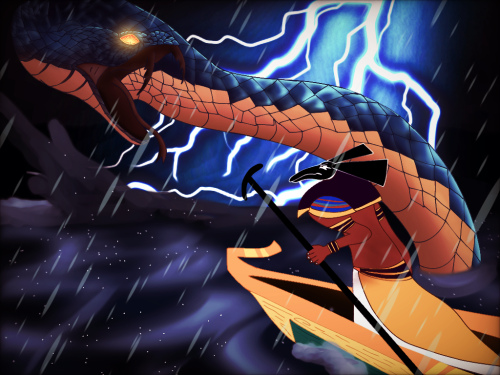
This piece was inspired by a very specific depiction found below , titled "Set, upon the prow of the solar barque, repels Apophis from 21st Dynasty Book of the Dead".

"Now after a while he will turn his eye against Re, and a stoppage will occur in the Sacred Bark and a great vision among the crew, for he will swallow up seven cubits of the great waters; Seth will project a lance of iron against (Apep) and will make him vomit up all that he has swallowed."
Hitching a ride on a Whale Shark
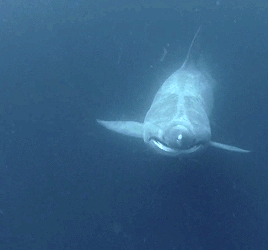
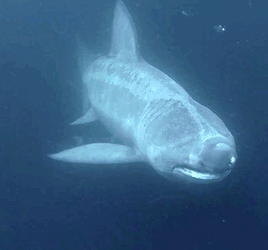
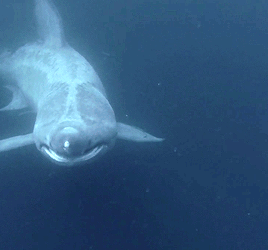
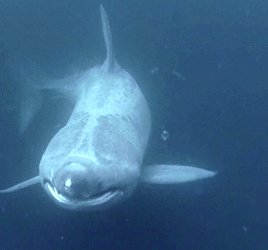
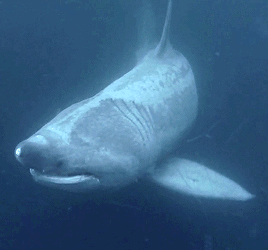
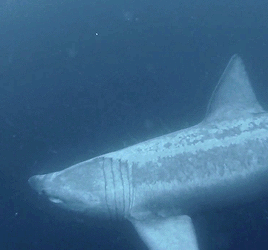
Rare sighting of basking shark in deeper water with its mouth closed.
LMAO BUSHROOT AND HIS GREMLIN CHILDREN
The chaos crew


the more things change…
Something’s fishy 🐟🐠


werewolf park ranger
she loves her job and helps keep the deer population under control

ever wanted to see winged fish. yes you have
(you can get this on my redbubble)


a mating pair of tyviit harass a pair of bjommri, while a frandir fox picks parasitic crabs, unbothered
species info under the cut (its long lol)
these creatures are native to the ursval islands, a northern region dominated by temperate rainforest and rocky coastlines.
tyviit are part of a family of flightless sea pterosauroids that can be found almost worldwide (though are concentrated in northern latitudes). they occupy a similar niche to penguins, but are far quicker on land and capable of a (somewhat awkward) quadrupedal gait, and can be found far inland and even in fresh water. they congregate in large colonies, nesting near the treeline. they feed almost exclusively on fish, and are extensively hunted by bjommri while out at sea.
this clade is unique among pterosauroids, both for their flightlessness and for the density of their pyncofiber (hair). this incredibly dense coat works alongside a layer of blubber to keep them warm in cool seas.
bjommri and frandir are both part of a small clade of marine mammals exclusively found in northern latitudes. while their exact classification is uncertain, they are believed to derive from early canids who found niches in cool coastal areas. the two are distant cousins, with frandir representing the basal form of this group.
bjommri are large predators, with the biggest individuals weighing in at around 2000 lbs. their (and others of their clade) method of propulsion is unique among marine mammals, bearing more similarity to polycotylid plesiosaurs than the seals they resemble. however, they still haul onto land to rest and breed, where they are slow to the point that their prey can quite easily walk among them.
also unlike seals, they are almost strictly monogamous, forming close-knit pair bonds that can last a lifetime. their fur coloration and spotting is unique to each individual and assists in recognition. while these pairs are generally mates, they may also be siblings or an unrelated same-sex bond, in which case they will mate with other pairs or unattached bachelors. these pairs will coordinate hunts, sometimes even taking down small beaked whales, but mostly consume fish, squid, seabirds, tyviit, and seals.
the frandir fox (or just frandir) (not actually a fox) are opportunistic omnivores, eating fish, mollusks, kelp, seabirds, eggs, berries, and occasionally congregating in loose packs to hunt small seals or young ungulates (though they are typically solitary). they also feed on the parasitic crabs that plague the bjommri, and in turn are tolerated and receive a degree of protection from the bigger beasts. their similar coat colors and close interaction earns them their name, which roughly translates to 'little cousin'.
the parasitic crabs here have no specific name, but are colloquially referred to as 'sea ticks'. they are opportunistic parasites, feeding predominantly on the blood of semi-aquatic mammals but also sometimes stealing bites from their host's prey. they are removed from bjommri via social grooming, but their small size, flat shells, and tight grasp make this a difficult task for such a large animal. the delicate teeth of the frandir fox are better suited to this task.
-
 watchtimeticktock reblogged this · 4 months ago
watchtimeticktock reblogged this · 4 months ago -
 watchtimeticktock liked this · 4 months ago
watchtimeticktock liked this · 4 months ago -
 lzzxmz liked this · 5 months ago
lzzxmz liked this · 5 months ago -
 skyripper liked this · 1 year ago
skyripper liked this · 1 year ago -
 cole-and-geos-wife liked this · 1 year ago
cole-and-geos-wife liked this · 1 year ago -
 blandsandwich liked this · 1 year ago
blandsandwich liked this · 1 year ago -
 scarletlight-has-issues liked this · 1 year ago
scarletlight-has-issues liked this · 1 year ago -
 juniperjellyfish reblogged this · 1 year ago
juniperjellyfish reblogged this · 1 year ago -
 juniperjellyfish liked this · 1 year ago
juniperjellyfish liked this · 1 year ago -
 cringelordofchaos reblogged this · 1 year ago
cringelordofchaos reblogged this · 1 year ago -
 cringelordofchaos liked this · 1 year ago
cringelordofchaos liked this · 1 year ago -
 george-number-3 liked this · 1 year ago
george-number-3 liked this · 1 year ago -
 sprixspace liked this · 1 year ago
sprixspace liked this · 1 year ago -
 beeware-of-lulu liked this · 1 year ago
beeware-of-lulu liked this · 1 year ago -
 sourboyy liked this · 1 year ago
sourboyy liked this · 1 year ago -
 rotiferola liked this · 1 year ago
rotiferola liked this · 1 year ago -
 movedd liked this · 1 year ago
movedd liked this · 1 year ago -
 sunflowerseraph liked this · 1 year ago
sunflowerseraph liked this · 1 year ago -
 electronicdreamerdreamer liked this · 1 year ago
electronicdreamerdreamer liked this · 1 year ago -
 nightingaleinberkleysquare liked this · 1 year ago
nightingaleinberkleysquare liked this · 1 year ago -
 danceswithsalmon reblogged this · 1 year ago
danceswithsalmon reblogged this · 1 year ago -
 danceswithsalmon liked this · 1 year ago
danceswithsalmon liked this · 1 year ago -
 bunkyprudestr reblogged this · 1 year ago
bunkyprudestr reblogged this · 1 year ago -
 ms-y liked this · 1 year ago
ms-y liked this · 1 year ago -
 requilune liked this · 1 year ago
requilune liked this · 1 year ago -
 beelzebby666 reblogged this · 1 year ago
beelzebby666 reblogged this · 1 year ago -
 9tailsmaki liked this · 1 year ago
9tailsmaki liked this · 1 year ago -
 longago-once-3 liked this · 1 year ago
longago-once-3 liked this · 1 year ago -
 bajablastflavoredsaxreed liked this · 2 years ago
bajablastflavoredsaxreed liked this · 2 years ago -
 the-dolphin-queen liked this · 2 years ago
the-dolphin-queen liked this · 2 years ago -
 ghostimre liked this · 2 years ago
ghostimre liked this · 2 years ago -
 oceaniques reblogged this · 2 years ago
oceaniques reblogged this · 2 years ago -
 luminousespeon liked this · 2 years ago
luminousespeon liked this · 2 years ago -
 spacefinch reblogged this · 2 years ago
spacefinch reblogged this · 2 years ago -
 spacefinch liked this · 2 years ago
spacefinch liked this · 2 years ago -
 funkythresher liked this · 2 years ago
funkythresher liked this · 2 years ago -
 jewelyahmarried reblogged this · 2 years ago
jewelyahmarried reblogged this · 2 years ago -
 jewelyahmarried liked this · 2 years ago
jewelyahmarried liked this · 2 years ago -
 iamhuman-notsuspicious reblogged this · 2 years ago
iamhuman-notsuspicious reblogged this · 2 years ago -
 stars-seas-and-symphonies reblogged this · 2 years ago
stars-seas-and-symphonies reblogged this · 2 years ago -
 stars-seas-and-symphonies liked this · 2 years ago
stars-seas-and-symphonies liked this · 2 years ago -
 seagremlin reblogged this · 2 years ago
seagremlin reblogged this · 2 years ago -
 seagremlin liked this · 2 years ago
seagremlin liked this · 2 years ago -
 autismwonderland reblogged this · 2 years ago
autismwonderland reblogged this · 2 years ago -
 gayest-of-ghosts liked this · 2 years ago
gayest-of-ghosts liked this · 2 years ago -
 v0idbird liked this · 2 years ago
v0idbird liked this · 2 years ago

Thylacine archive blog: @moonlight-wolf-archive
204 posts